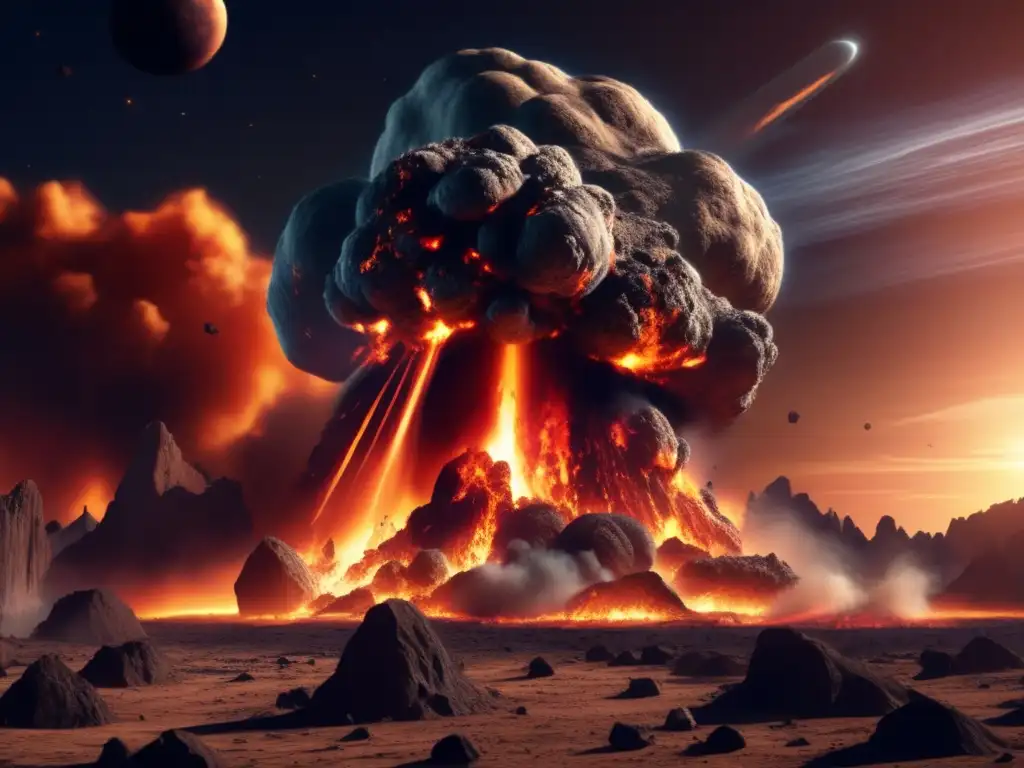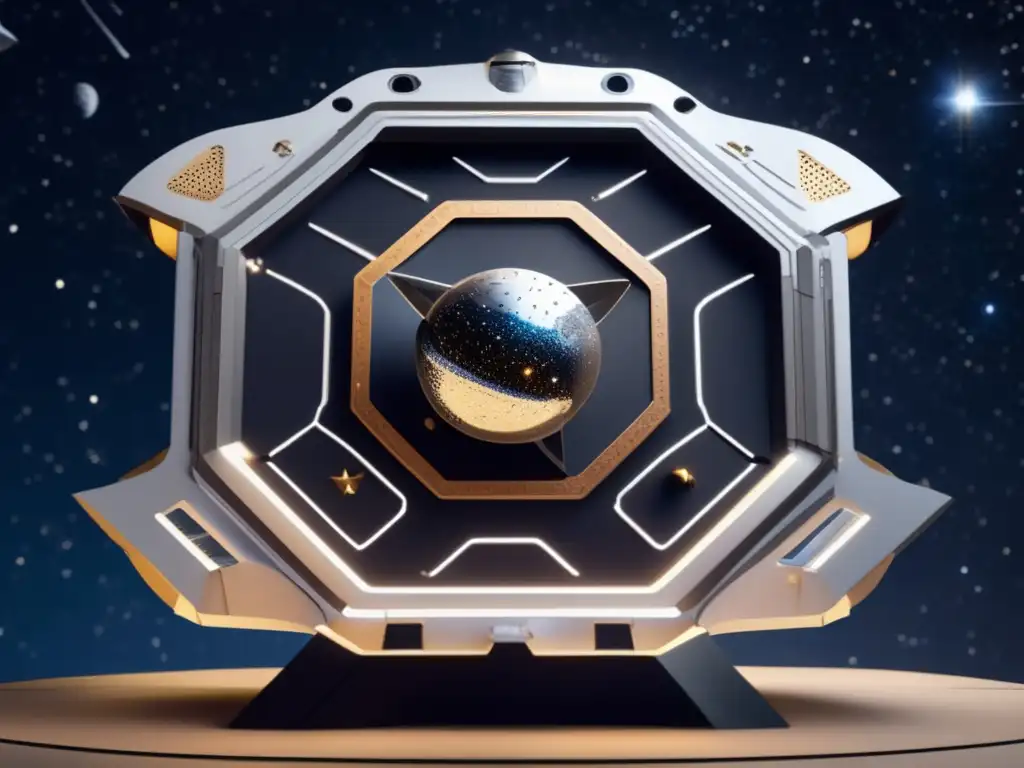Stellar Shield: The Role Of Technology In Asteroid Defense

Introduction
Asteroids have been deemed as one of the major threats to the world and, therefore, it is important to find ways to defend ourselves against them. This has led to planetary defense becoming a crucial topic in astronomy. An asteroid impact could cause destruction on a global scale, potentially resulting in the extinction of species and even human life. Consequently, scientists and engineers have developed technologies that can protect us from dangerous asteroids in space. One such technology is the stellar shield, which is an array of spacecraft designed to deflect or destroy incoming asteroids. In this article, we will be discussing the role of technology in defending our planet against asteroids, with a focus on the stellar shield.
The Origins of Planetary Defense

The Impact Theory
The idea of meteorite impacts causing global destruction is not new. However, it was only in the 20th century when science started taking it seriously. In 1930, the Tunguska Event in Siberia, which was caused by a massive meteor explosion, opened people's eyes to the danger that asteroids pose to our planet. Then, in the 1980s, the knowledge of dinosaur extinction caused by an asteroid impact became widespread, leading to heightened awareness of the potential risks involved. This led to the establishment of organizations that began monitoring asteroids, such as NASA's Near-Earth Object Program.
The Importance of Planetary Defense
The immense destructive potential of asteroids has led to the development of measures to deal with them. In 2005, the US Congress passed the George E. Brown Jr. Near-Earth Object Survey Act, which aimed to identify 90% of near-Earth objects larger than 140 meters in diameter by 2020. Additionally, in 2016, NASA launched the "Asteroid Redirect Mission," which aims to capture and redirect an asteroid's orbit, providing a sample for study while also demonstrating a technique for defending against potential impacts. These efforts emphasize the importance of planetary defense in safeguarding human life and ensuring the continuity of our species.
The Stellar Shield Concept

What is a Stellar Shield?
A Stellar Shield is a formation of spacecraft designed to deflect or destroy incoming asteroids. The idea is to use kinetic impactors or nuclear bombs to deflect the trajectory of an asteroid away from Earth. This technology involves launching multiple spacecraft toward the asteroid, which will approach simultaneously and, on impact, alter its course. The concept is to use the spacecraft as a "shield" to protect the planet from destruction caused by asteroid collisions.
Advantages and Disadvantages
The advantages of the Stellar Shield concept are that it is relatively cheap, scalable, and can work against a wide range of asteroids as long as they are detected early enough. Moreover, the method is capable of deflection at higher speeds, which makes it easier to deflect large asteroids in a shorter time. On the other hand, the use of nuclear weapons in space is prohibited by international law and using them for defense purposes could complicate diplomatic relations. Another disadvantage is that the technology requires a high degree of accuracy in timing, speed, and impact.
Challenges in Implementing Stellar Shield
There are a few significant challenges in implementing the Stellar Shield concept, such as:
1. Detection and Tracking of Asteroids
The first challenge is detecting asteroids at the earliest possible stage before they come too close to Earth. This means deploying satellites and telescopes to monitor space continuously and identify smaller asteroids, which could be missed by present detection methods. Special equipment is needed to track and estimate the trajectories of the detected asteroids accurately.
2. Fast Deployment
Once an asteroid has been identified as a hazard, it is crucial to deploy a defense mechanism as soon as possible. This requires that appropriate spacecraft are readily available to be launched within a short period. This can take anywhere from a few months to several years, depending on the mission's complexity, technology, and funding.
3. Accuracy and Reliability
The success of the Stellar Shield concept depends on the accuracy and reliability of the technology used. A slight variation or error in the trajectory could cause disastrous outcomes, such as the asteroid hitting Earth or missing its intended target altogether. Therefore, the systems and equipment we use must be highly accurate.
FAQs

-
Can All Asteroids Be Deflected?
No, some asteroids may be too large, too fast, or too close to Earth to be deflected successfully using current technology. Nevertheless, attempts will still be made to deflect them.
-
What is the Likelihood of an Asteroid Hitting Earth?
The chance of an asteroid impact occurring is relatively low, but its consequences would be catastrophic. It is, therefore, important to be prepared to deal with any eventuality.
-
How Much Time Do We Have to Prepare for an Asteroid Impact?
This depends on the size and speed of the asteroid, as well as the distance between it and Earth. Some asteroids may be detected decades in advance, while others may only be spotted a few months or weeks before impact.
-
Would the Stellar Shield Work Against Large Asteroids?
It depends on the size and speed of the asteroid. If detected early enough, the Stellar Shield concept has the potential to deflect even large asteroids away from Earth.
-
Are There Any Other Methods for Asteroid Defense?
Yes, other methods include gravity tractors, laser ablation, and solar sails. However, these methods are either still in the research phase or not as effective as the Stellar Shield in dealing with larger asteroids.
Conclusion
The Stellar Shield concept is a vital part of planetary defense against asteroid impacts. While it has its challenges and hurdles to overcome, it is still one of the most promising technologies available. The threat of an asteroid impact may seem remote to some people, but planning and preparation are necessary to deal with any eventuality. As such, continued investments in technology, scientific research, and monitoring are essential to protect our planet from this kind of disaster.
Additional Resources

- NASA Near-Earth Object Program
- Space.com: Detonating Nuclear Bombs to Defend Earth From Asteroids
- NASA Double Asteroid Redirect Test (DART)
- Popular Mechanics: Asteroid Defense Tech So Crazy, it Just Might Work
 Earth’s Sentinels: The Science Of Detecting And Diverting Asteroids
Earth’s Sentinels: The Science Of Detecting And Diverting Asteroids Our Cosmic Bodyguard: Technologies In Asteroid Defense
Our Cosmic Bodyguard: Technologies In Asteroid Defense Preventing Skyfall: Tools For Planetary Defense
Preventing Skyfall: Tools For Planetary DefenseIf you want to discover more articles similar to Stellar Shield: The Role Of Technology In Asteroid Defense, you can visit the Planetary Defense category.
Leave a Reply

Articulos relacionados: